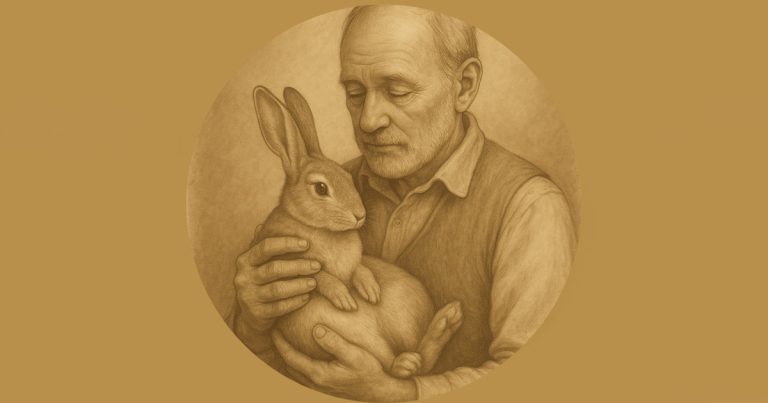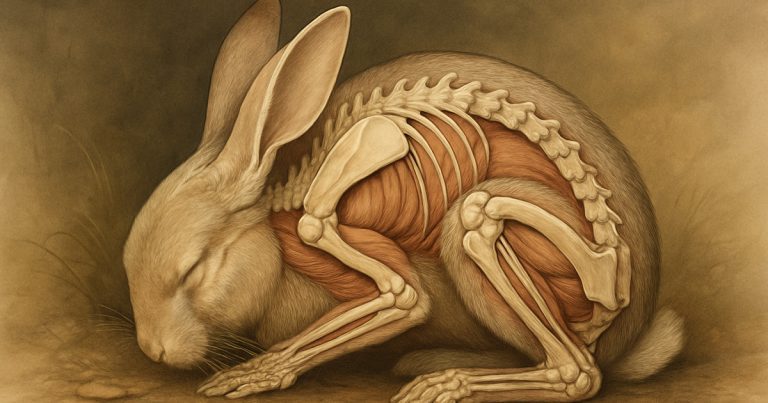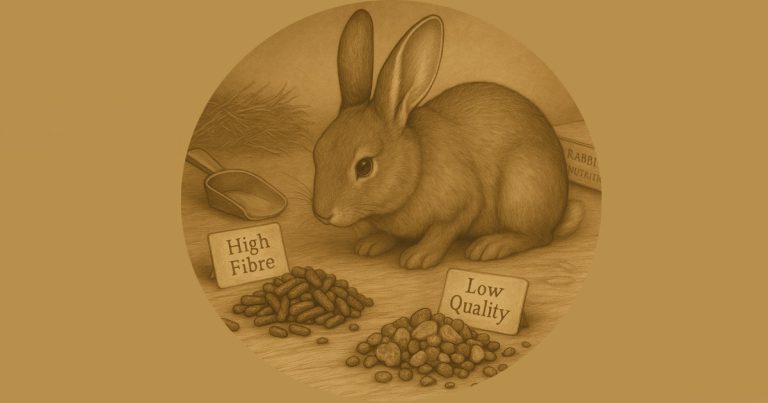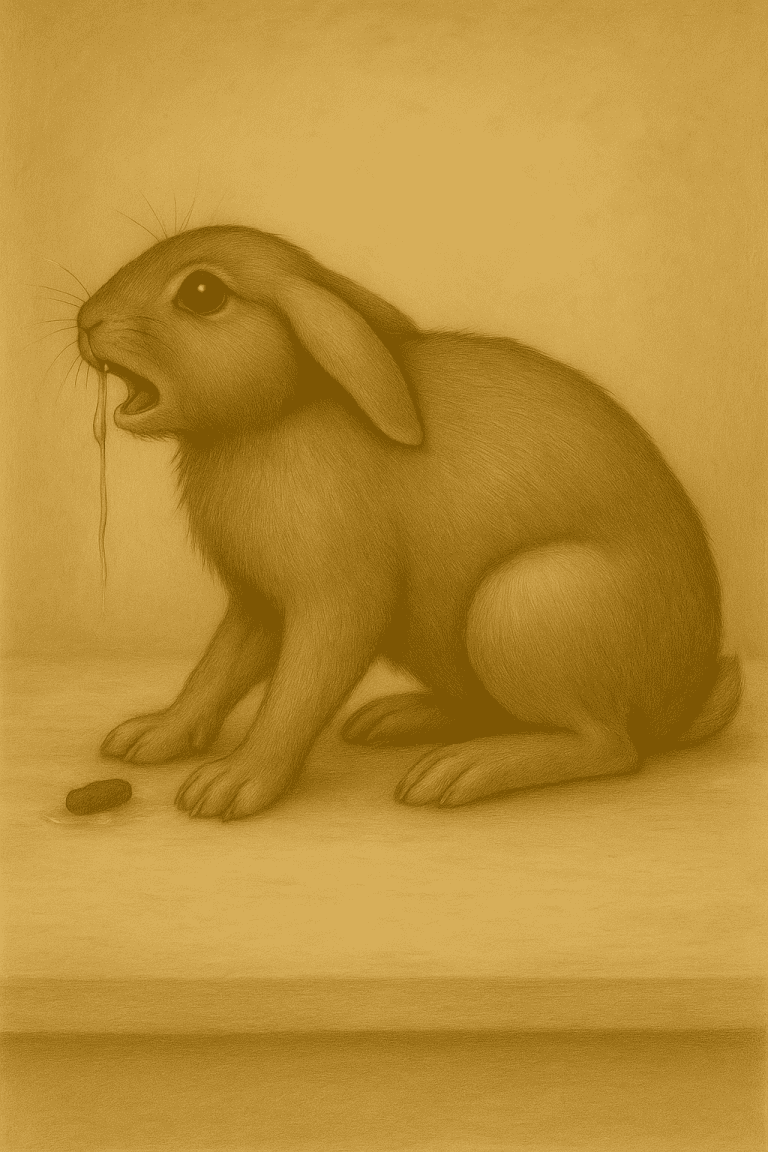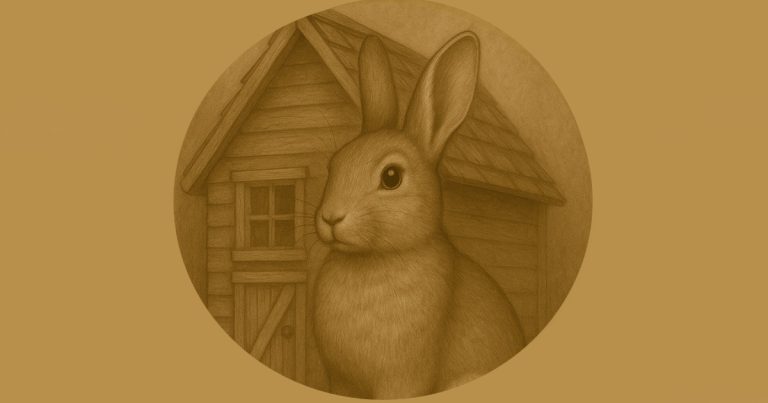Coccidiosis (Coxi)
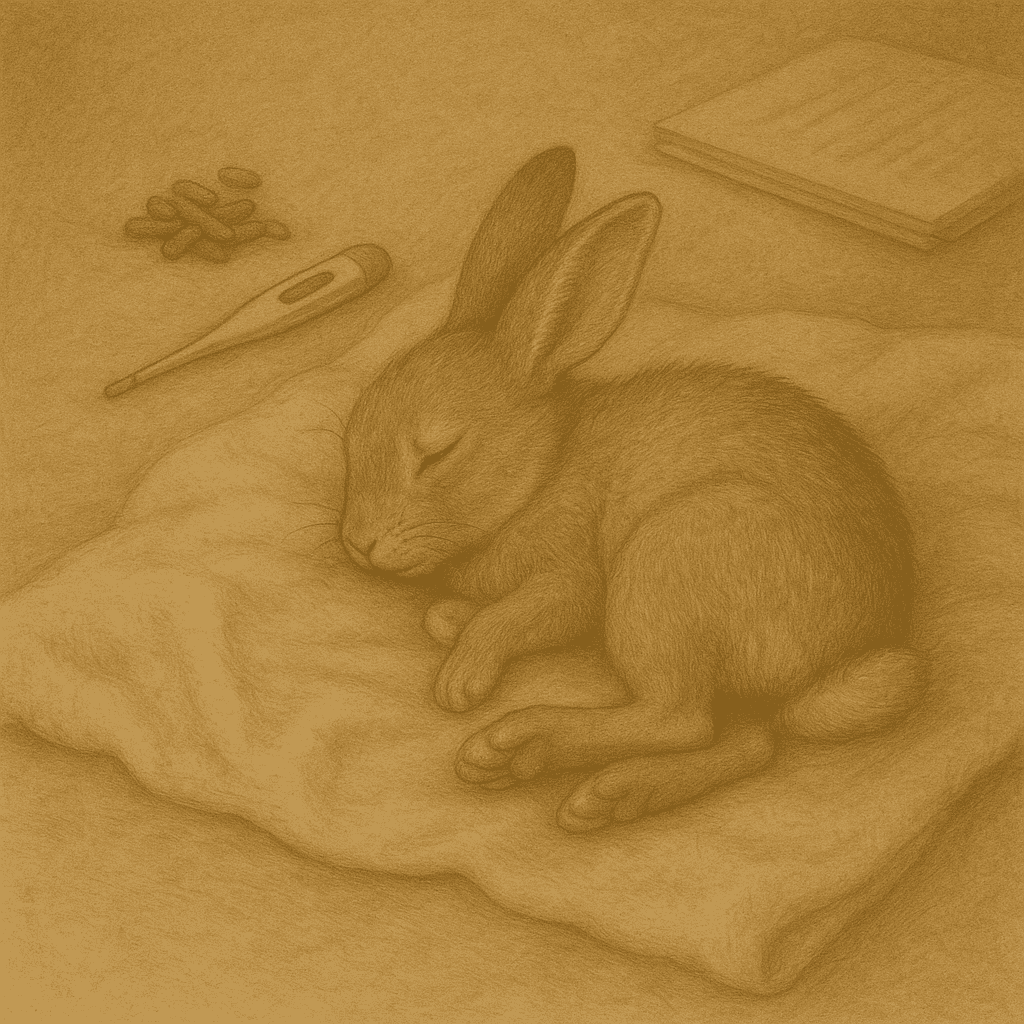
Introduction: What is Coccidiosis (Coxi)?
Coccidiosis (Coxi). often called Coxi—is one of those rabbit illnesses that slips under the radar until it’s done real damage. Caused by microscopic parasites (Eimeria), it attacks the gut lining and spreads through contaminated food, water, or droppings.
Most rabbits are exposed to it at some point. A healthy rabbit with a strong immune system might carry the parasite and show no signs. But add stress, heat, a dirty cage, or poor-quality food, and it can flare up fast. The gut becomes inflamed, the rabbit stops eating, and stasis sets in. Left untreated, it can be fatal.
Here’s the problem: it’s rarely diagnosed by vets early on. Unless they’re specifically looking for it—or you ask for a faecal test—it often goes unnoticed. Instead, you’re sent home with gut stimulants and told to monitor food intake, which is fair enough when time is tight and symptoms are vague.
Sometimes, mucoid enteritis—that thick jelly-like muck you find in the litter tray—can show up too. It’s not a disease in itself, but a response to something upsetting the gut’s balance, and Coxi is a known trigger.
The danger is subtlety. No bloody diarrhoea. No screaming headline symptoms. Just a quiet rabbit, small poos, weight loss, and a gut that slows to a crawl. That’s why this story is worth telling—because spotting it in time takes experience, instinct, and, honestly, a bit of luck.
And in this case, it took all three.
The Morning That Changed Everything
Like many Redbeck stories, this one started at 6.30am. Feed, water, barley ring treat, and a head rub—our usual start. Every rabbit comes forward like clockwork. All of them. Except one.
No bounce. No welcome. Just sat quietly in the corner of his enclosure.
Opened the door—nothing. No food touched. Water untouched. Hay untouched. And this lad loved his hay.
Quick once-over—teeth, eyes, ears, belly, bum—all looked normal. But he wasn’t himself. I ran inside for my stethoscope, which turned into a fine sight for the neighbours—old man Redbeck, dressing gown flapping, rabbit in one hand, stethoscope in the other.
His gut? Far too quiet.
Heart racing. Breathing shallow. Not right at all.
For context:
- Normal heart rate: 130–325 bpm
- Normal breathing rate: 32–60 bpm
- Normal temperature: 38.3–39.4°C
(Over 40°C is cause for concern)
Rabbit guts should sound like a washing machine. This one was barely humming. No bloat. No visible pain. But I knew what we were dealing with.
His droppings the day before had been small—another classic early sign of gut stasis.
Understanding Gut Stasis
Gut stasis isn’t a disease—it’s a response. Something upsets the rabbit—stress, pain, toxins, illness—and the gut slows down or stops. That leads to a dangerous spiral of gas, bacteria, dehydration, and shutdown.
There are four main types:
- Bloat – belly swollen and soft.
- Blockage – belly hard, painful to touch.
- Slowing gut – fewer droppings, reduced appetite.
- Gut failure – often due to poisoning, infection, or parasites.
Ours was the third—slowing gut. I gave him pain relief and a gut stimulant, tempted him with his favourite herbs, and got him weighed. Then we booked a vet appointment for that evening.
Why not rush him in immediately? Because stasis is a symptom, not the root cause. If you don’t find out why it’s happening, it’ll come back. And more often than not, the cause is us.
Stress.
Change.
Contaminated food.
The vet confirmed gut slowdown. No dental issues—usually the first thing they check. We left with more meds and instructions to monitor closely. But I wasn’t convinced. Something didn’t add up. He wasn’t in pain, his teeth were fine, and yet his body was quietly shutting down. There was something else at play here—something deeper, and I knew I hadn’t found it yet.
Now before we go further, let me be clear—I’m not a vet, and I’ve got a lot of respect for them. Within their field—dogs, cats, horses—they’re brilliant. But when it comes to rabbits, you can tell immediately whether someone really knows their stuff… or doesn’t.
What we were given was the holy trinity of cat and dog care: antibiotics, gut stimulant, and pain relief. For a rabbit though, these are symptom meds—not source meds. They stabilise the rabbit, yes—but they don’t ask why the problem started. And I’ve seen this pattern far too many times.
Day Two: Hope… Then Silence
He nibbled a little veg. Gut noises improved. Droppings returned.
Normally, this is when they bounce back. But not this time.
He stayed quiet. Wouldn’t eat hay or pellets. Nothing wrong on the outside—no pain, normal temperature, bright eyes. Just fading.
We kept weighing him. An ounce a day was slipping away. In rabbits, a 20% loss in body weight is often fatal. We were getting close.
Then the droppings stopped again. We restarted the gut stimulant. That got things moving again—but only just. He would only eat Cheerios, strawberries, and Weetabix.
Not ideal. But when a rabbit is starving, some food is better than none.
Eventually, we started syringe-feeding Science Selective Recovery, twice a day. Calories in. Just enough to hold the line.
What Had Changed?
Could it be congenital? Possibly. But experience told me I was missing something. Something I had done.
So I started asking the hard questions:
- We’d moved him into the new shed (stress? heat?)
- He’d been to a couple of shows (poor cage hygiene?)
- We’d switched herb suppliers (contamination?)
That last one rang alarm bells. We hadn’t been washing the herbs. Not properly.
We changed course:
- Brought him back indoors—calm, cool, and quiet.
- Pulled him from all future shows. When we do go, we now disinfect cages ourselves and bring our own bedding.
- Stopped using the suspect herbs. Full stop. And everything gets washed before feeding now.
But the symptoms kept coming back.
The Parasite We Nearly Missed
There were still no obvious signs of worms. But with rabbits, that doesn’t mean much—parasites don’t always announce themselves.
We started a 28-day course of Panacur (Lapizole)—your standard wormer. But still, no bounce. No appetite. Just a rabbit quietly fading.
That’s when we began to seriously consider the possibility of an internal parasitic infection—and more specifically, Coccidiosis. We already knew about Cox. It’s fairly common in poultry, and there are plenty of feeds, supplements, and water treatments aimed at controlling it in birds.
So we followed the logic.
We collected fresh faecal samples and sent them off for analysis. Yes, I know—the vet could’ve done this. But by paying a small surcharge and going directly through a local lab, we got the results back within 24 hours, at a fraction of the cost.
Three days in, the report landed:
Coccidial oocysts – scant to moderate levels.
That told us the parasite was there. But here’s the key point: Coxi is incredibly common. Most rabbits carry it at low levels and show no signs at all. A healthy immune system keeps it in check.
But combine stress, the heat, travel, and the pressure of rabbit shows, and the rabbit’s system can take a knock. That’s when Cox finds its opportunity—when the gut is already struggling, the defences are down, and the perfect storm rolls in.
And this time, it did.
Coxi: The Hidden Killer
Coccidiosis isn’t rare—but it’s rarely diagnosed unless you specifically ask for testing. It’s one of those conditions that hides in plain sight, quietly undermining a rabbit’s health without setting off the usual alarms.
The parasite—Eimeria—invades the gut lining, causing inflammation, irritation, and long-term damage if left unchecked. But unlike more dramatic illnesses, it often doesn’t present with anything obvious. No bloody diarrhoea. No bloated belly. Just a rabbit that slowly loses interest in food, starts producing smaller droppings, and eventually slips into gut stasis.
And here’s the kicker—Panacur (fenbendazole), your go-to wormer, won’t touch it. Not even a dent. It’s brilliant for roundworms, pinworms, and Encephalitozoon cuniculi, but Coxi? It may as well be sugar water.
To treat Coxi, you need a completely different type of medication—usually a sulphonamide-based drug. In our case, it was sulphaquinoxaline, administered on a 5 days on, 5 days off, 5 days on cycle. Some vets might prescribe sulfadimethoxine or toltrazuril, depending on what’s available and the severity of the infection.
It’s important to stress this: always follow your vet’s guidance. These drugs can affect gut flora—and that’s no small thing in rabbits.
In fact, let’s talk about that.
Antibiotics in rabbits are a double-edged sword. Unlike dogs or cats, rabbits rely heavily on the delicate balance of gut bacteria to digest food. The wrong antibiotic—or even the right one in the wrong amount—can disrupt that balance and trigger stasis or worse. Some antibiotics are outright toxic to rabbits. Others can be used safely, but always carry a risk.
That said, sometimes it’s a risk worth taking. If there’s a serious infection or a confirmed case like Coxi, the benefits can outweigh the risks—but it needs to be a considered decision, not a knee-jerk prescription.
In our case, the treatment worked. Slowly, his appetite came back. He stopped hiding. Droppings improved in size and number. The weight loss levelled out. It wasn’t an overnight fix—but it was the first real step forward in a very long and stressful battle
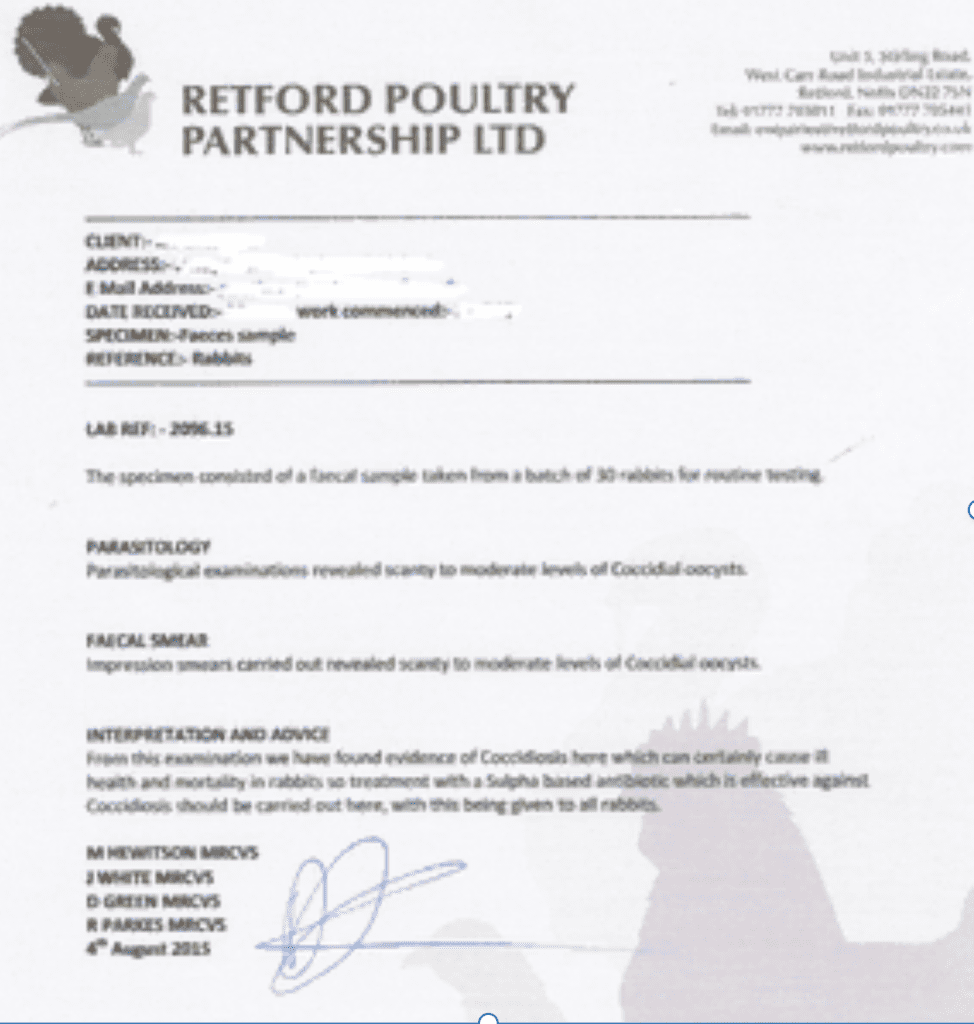
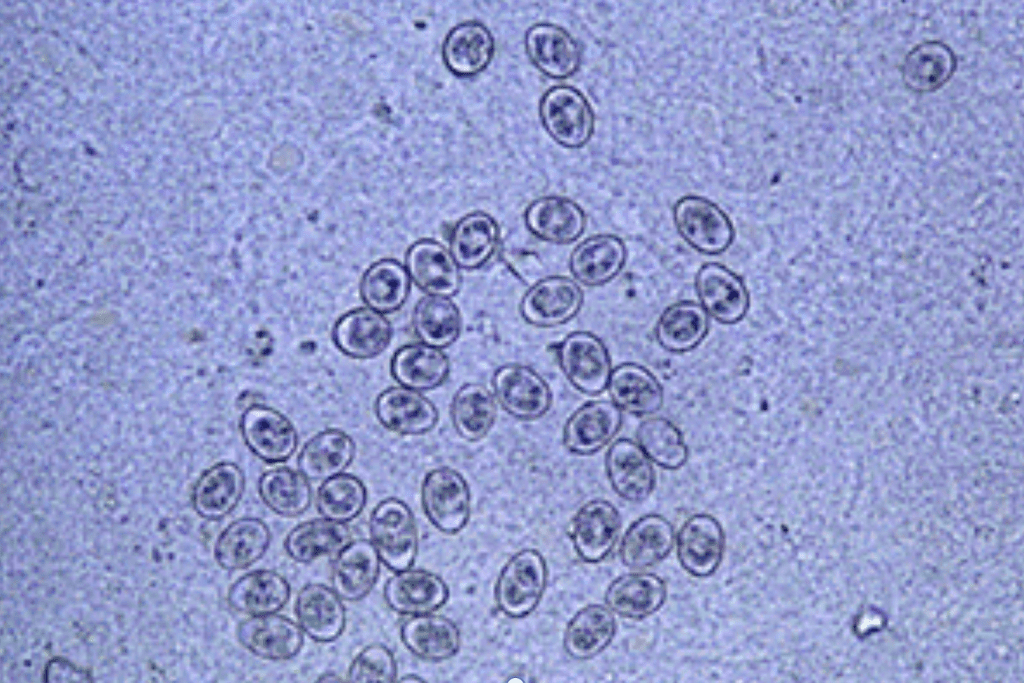
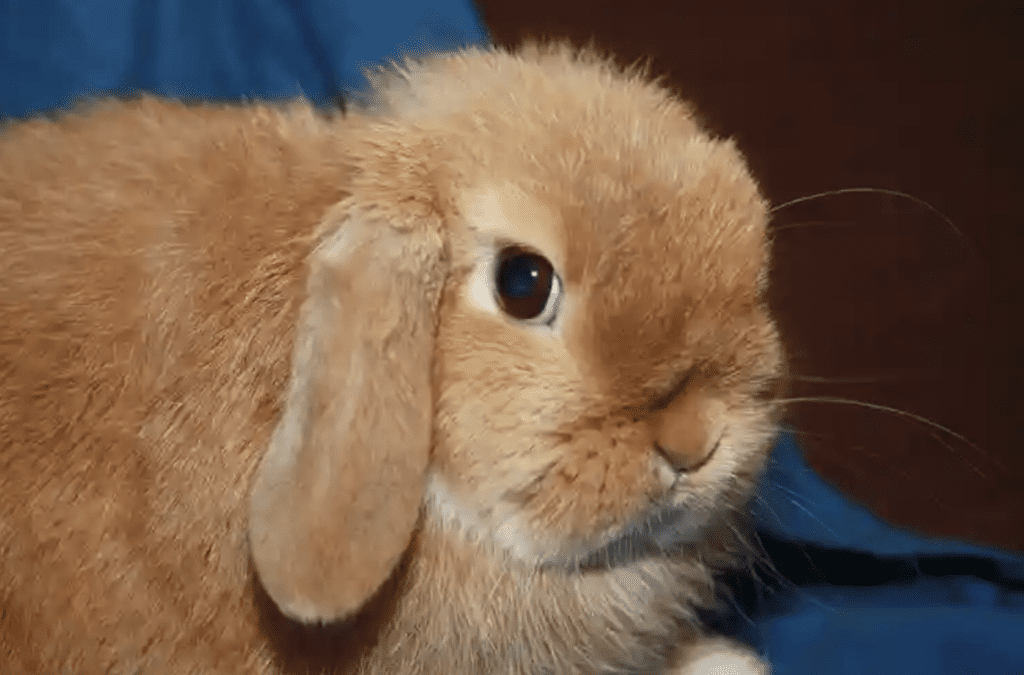
The Real Lesson
Cheap herbs can cost you far more than you think.
Not just in vet bills—but in the health, happiness, and sometimes even the life of your rabbit.
And as much as we value our vets—and we do—the truth is, they usually will not dig this deep. Not because they don’t care, but because the system isn’t built that way. They treat the immediate symptoms. They stabilise. But digging into causes like contaminated forage, parasite flare-ups, or subtle environmental stressors? That often falls to the owner.
Rabbits are delicate creatures, no question.
But more than that—they’re a living litmus paper for your environment.
If something isn’t right—be it food, hygiene, stress, or handling—they’ll show you, often before anything else around you does.
You just have to know how to listen.
References:
- Coccidiosis in Rabbits – Merck Veterinary Manual
- Coccidiosis Information – Charles River Laboratories
- Treating Coccidiosis in Rabbits – Happy Tails Rabbitry
- Sulfaquinoxaline Use – ScienceDirect Topics
- Impact of Antibiotics on Rabbit Gut Flora – PubMed Central
- Normal Gastrointestinal Flora in Rabbits – ScienceDirect
- Intestinal Parasites in Rabbits – Laboklin
- Eimeria stiedae (Hepatic Coccidiosis) – Wikipedia
Copyright © Redbeck Rabbit Boarding. This article is free to share with credit. No part may be copied, edited, or republished without permission.

